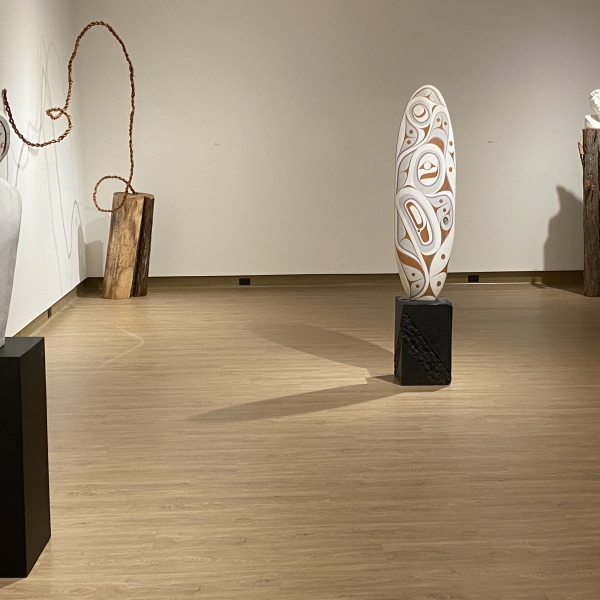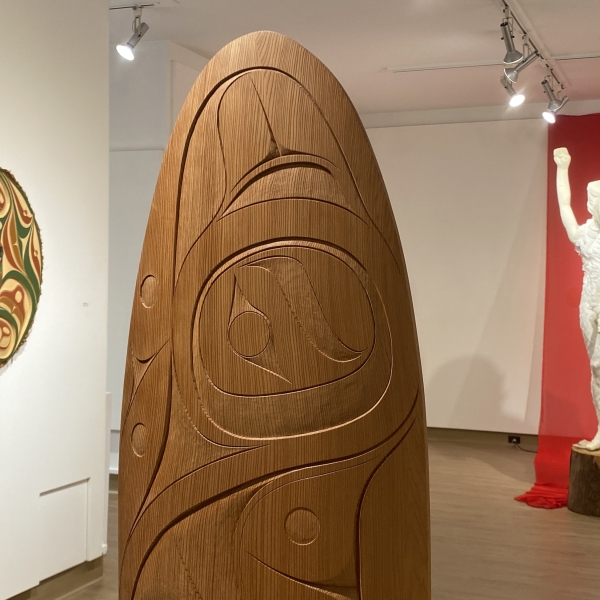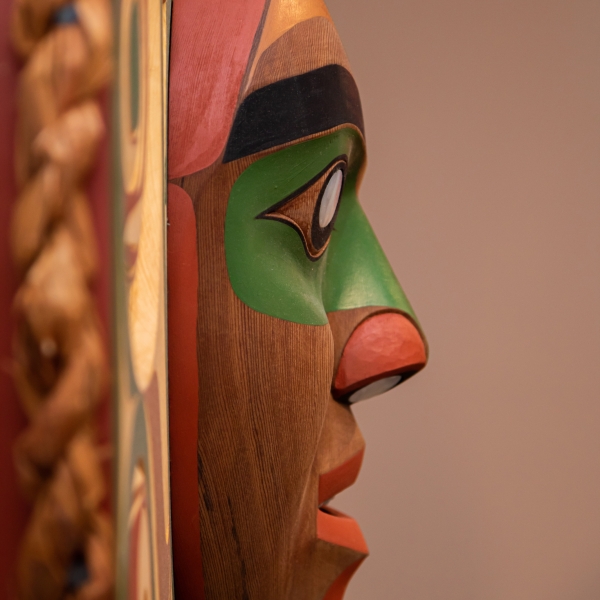When a Tree Falls, Are We Listening?
October 14 - November 27, 2021
Culturally Modified
Rande Cook makes artwork that is rooted in the land. It reflects the deep relationship he has to his home community in Alert Bay and to the traditional territories that his people have occupied for thousands of years. With the rapid disappearance of the last old growth stands of cedar, fir and spruce on the Pacific Coast, he has started to question the use of this valuable and increasingly rare material in his own art practice. In addition he has begun to raise his voice, to bring awareness to unsustainable logging practices that are still going on here on Vancouver Island and the Mainland BC Coast. Works produced in various media ask us to think about our own relationship to the land and to the commodity driven-culture that consumes it.
At the center of this exhibition is the cedar tree and its place within the artist’s Kwakwaka’wakw culture. The western red cedar is thought of as The Tree of Life and to the First People it provided so much, in terms of material culture as well as spiritual nourishment. Two works in the exhibition utilize sections of culturally modified cedar – a cedar tree that has had its bark sustainably harvested. The sections were liberated from a slash pile of a clear-cut in Rande’s traditional territory: Ma’amtagila Territory. Culturally modified trees along the Pacific Coast of Canada are supposedly protected from the logging industry but as is evidenced here, not protected well enough. The bark was harvested on the tree approximately 250 years ago and one section of it is used in Lifeline. This tree stood as a living historical document; proof of Rande’s ancestors’ presence on the unceded traditional lands from where it came. The bark on this tree was harvested 100 years before Canada was even constructed as a country.
The Raven is a central figure in creation stories of First Nations up and down the Pacific Coast of the Canada. In many cultures the Raven is thought of as a teacher and the bringer of the light to the People. In most he is also thought of as the Trickster. In Rande Cook’s work titled Culturally Modified, the Raven is portrayed in his original white form. The Raven only came into his black form after his encounter with the Sky Chief who had hidden away the sun and moon from the People in a bentwood box. After Raven had inserted himself into the household of the Sky Chief and secured the bentwood box, he escaped with it through the smoke hole of the long house, returning the sun and moon to the People. When he passed through the smoke hole to the other side his white feathers had turned black.[1] The Raven brought back the sun, moon, and many other gifts, including the Tree of Life - the cedar tree, to the people.
Inserted into the top of the section of Lifeline is a beautifully braided length of cedar bark rope. The braiding emerges out of a gap in the rings at a point in time when the bark was harvested, over two centuries ago. Winding its way up and around, the rope is always moving, persisting in its ability to reach forward and into this present moment.
Rande Cook (b. 1977) is a Kwakwaka’wakw multimedia artist and hereditary chief of the Ma’amtagila people. He has studied under master craftsmen and artists; John Livingston, Robert Davidson, Art Thompson, Bruce Alfred, William Cook and Calvin Hunt. He has completed artist residencies at the Pilchuck School of Glass (Stanwood WA), Museum of Glass (Tacoma WA), and the Vancouver Airport through Douglas Reynolds Gallery. In 2015 and 2016 Cook held the Audain Professorship of Contemporary Art Practice of the Pacific Northwest with the Visual Arts department at the University of Victoria. In 2021 he graduated from UVic with his Masters of Fine Art.
The Gallery wishes to thank Ria Giatsios, Lee Brooks, Mona Elliot and Spartan Media Group for permission to include their film The Tree of Life and its People in Rande Cook’s exhibition When a tree falls, are we listening
The View Gallery is VIU’s contemporary art gallery. The VIU community acknowledges and thanks the Snuneymuxw, Quw’utsun, Tla’Amin, Snaw-naw-as and Qualicum First Nation on whose unceded traditional lands we teach, learn, research, live and share knowledge.








